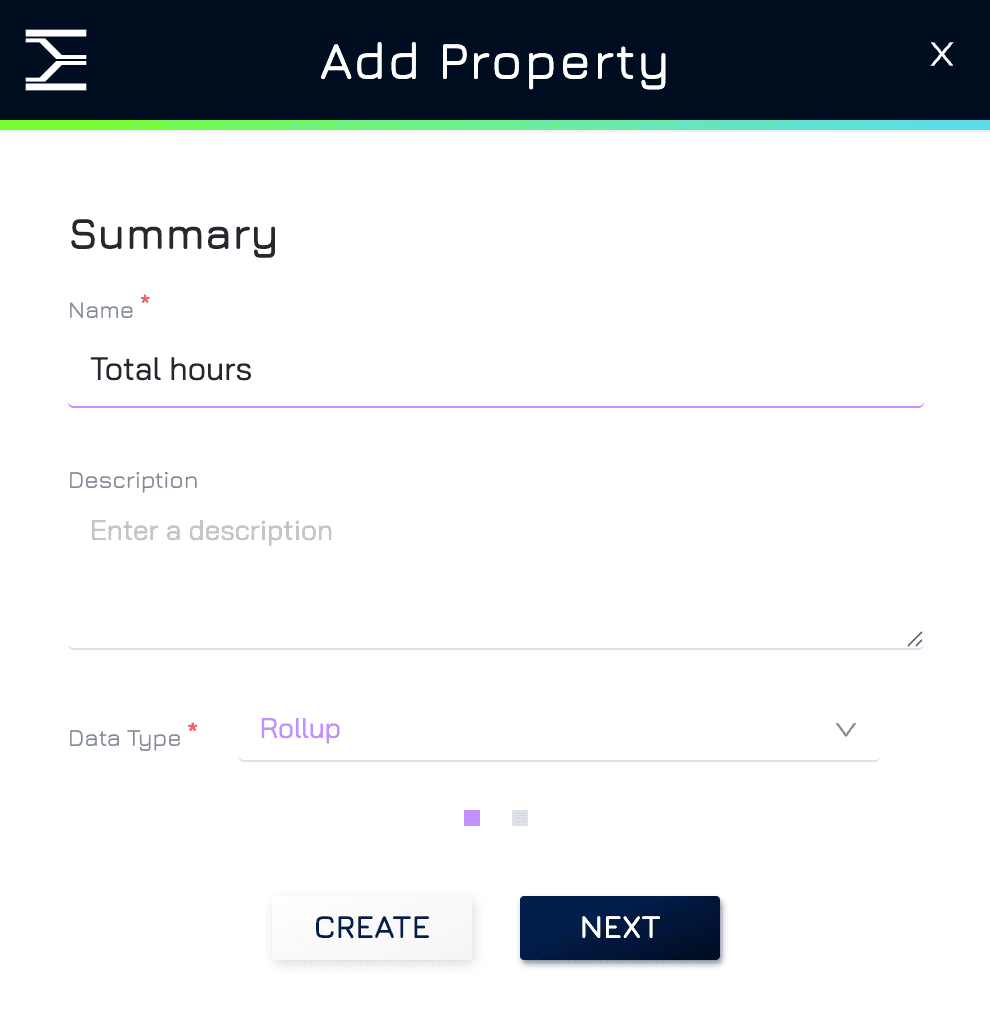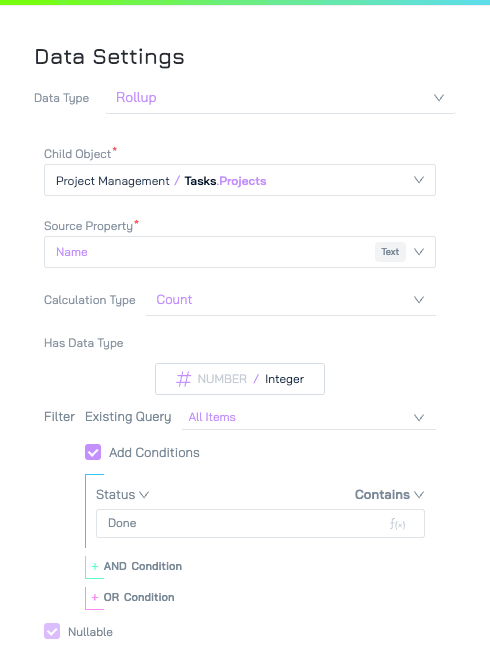Overview
A Rollup Property is used to aggregate data from child records linked to a specific field in your table. By defining a rollup property, you can automatically process data from child objects and display the results in a parent record.
Supported Function
Rollup fields support the following functions to process data:
Count: Counts non-empty records.
Count All: Counts all records, including empty ones.
All: If all records have the same value in the specified column, return true
Any: If any records have the specified value in the selected column, return true
Odd: Count the number of records that have the specified value in the selected column, if the result is an odd number, return true
Min: Finds the smallest value.
Max: Finds the largest value.
Sum: Adds up all values.
Average: Calculates the mean value.
Adding a Rollup Property
1. Add Property
Click Add Property to add a new field to your table.
Provide Basic Details
Enter the Name and Description of the rollup field.
Select the Data Type: Rollup
Click NEXT to proceed.
2. Configure Data Settings
Child Object: Select the related object which data you want to roll up.
Source Property: Choose the specific property from the child object to aggregate
Calculation Type: Select the function you want to apply to the source property. The available options depend on the data type of the source property.
The Min and Max functions can also display values from a different property in the source object. To configure this, use the Lookup option and select the field you want to show.
Query: Select a query from the existing query list to filter the child records. You can also refine the query further by adding additional conditions.
3. Finalize
Click CREATE to save your rollup field and apply it to your table.
Example
For example, if you’re managing a Project table linked to a Task table, a rollup field can:
Calculate Total Hours: Use the Sum function to roll up the "Hours Worked" field from tasks and display the total hours logged for a project.
Identify Earliest Deadline: Use the Min function to roll up the "Due Date" field and show the earliest task deadline.
Count Completed Tasks: Use the Count function on the "Status" field. Select a query that filters for completed tasks or add a condition to the query to count only tasks with a "Done" status.
Display the Name of the Task with the Highest Logged Hours: Use the Max function on "Hours Worked," then select Name as the lookup field to display the task name with the highest logged hours.







